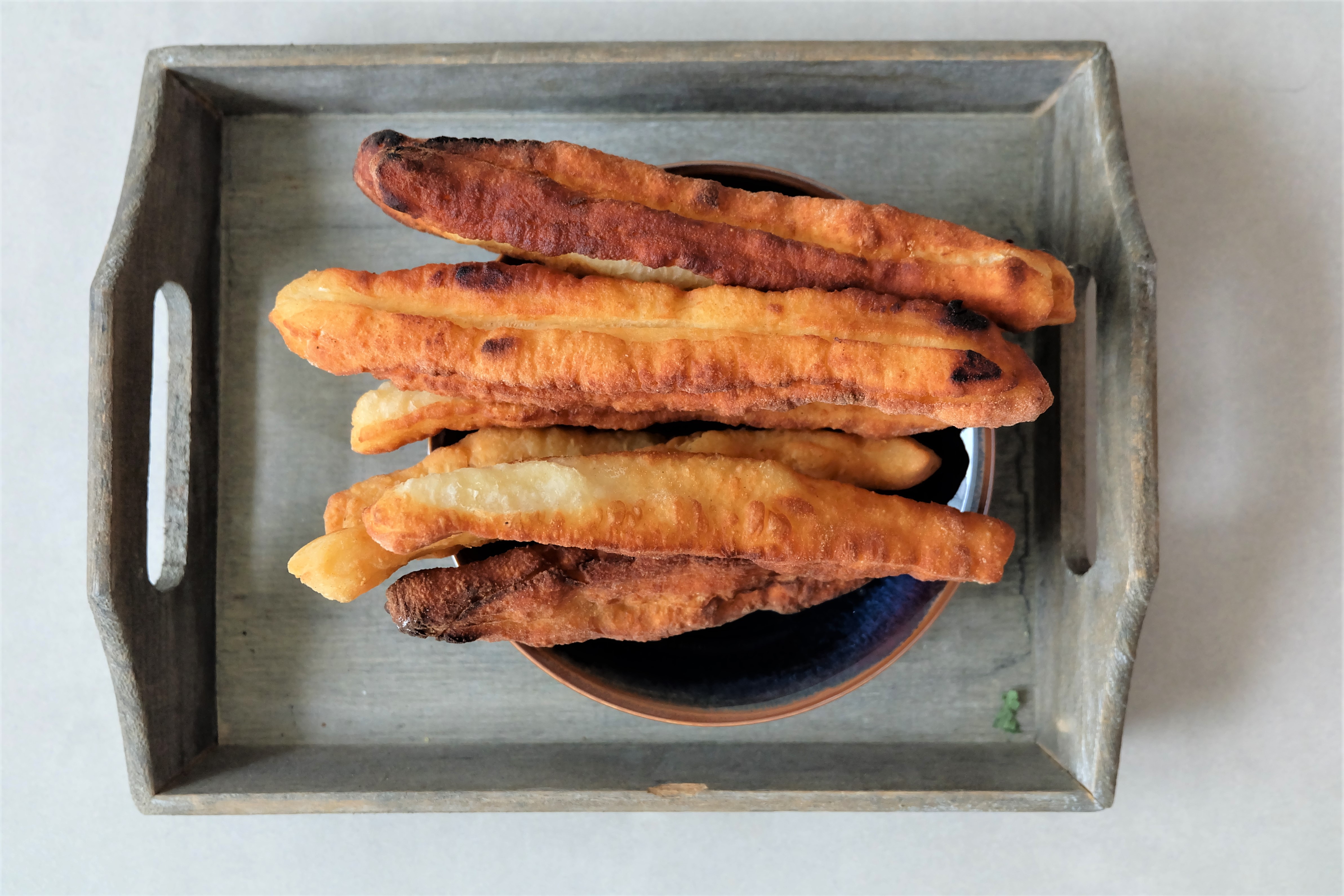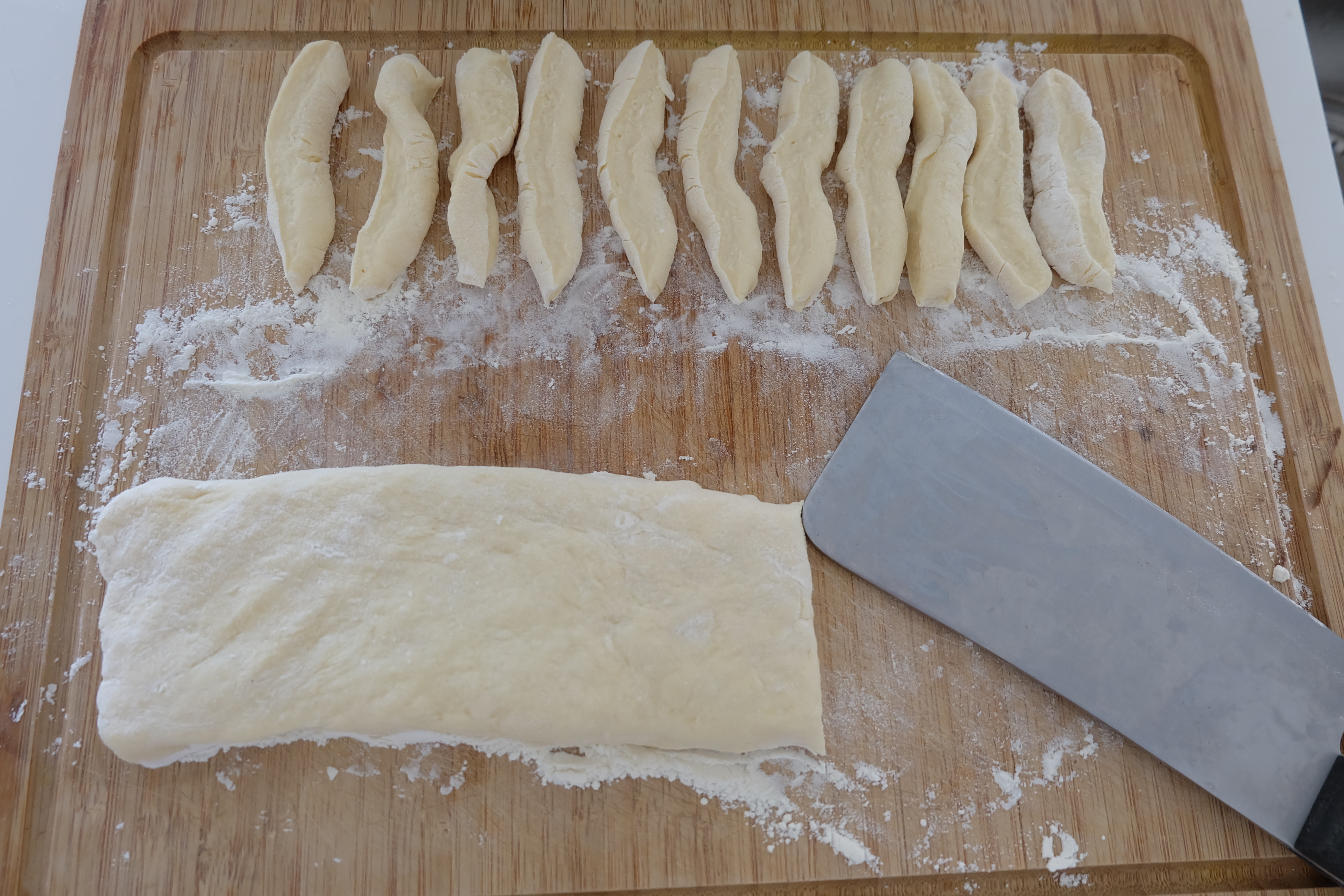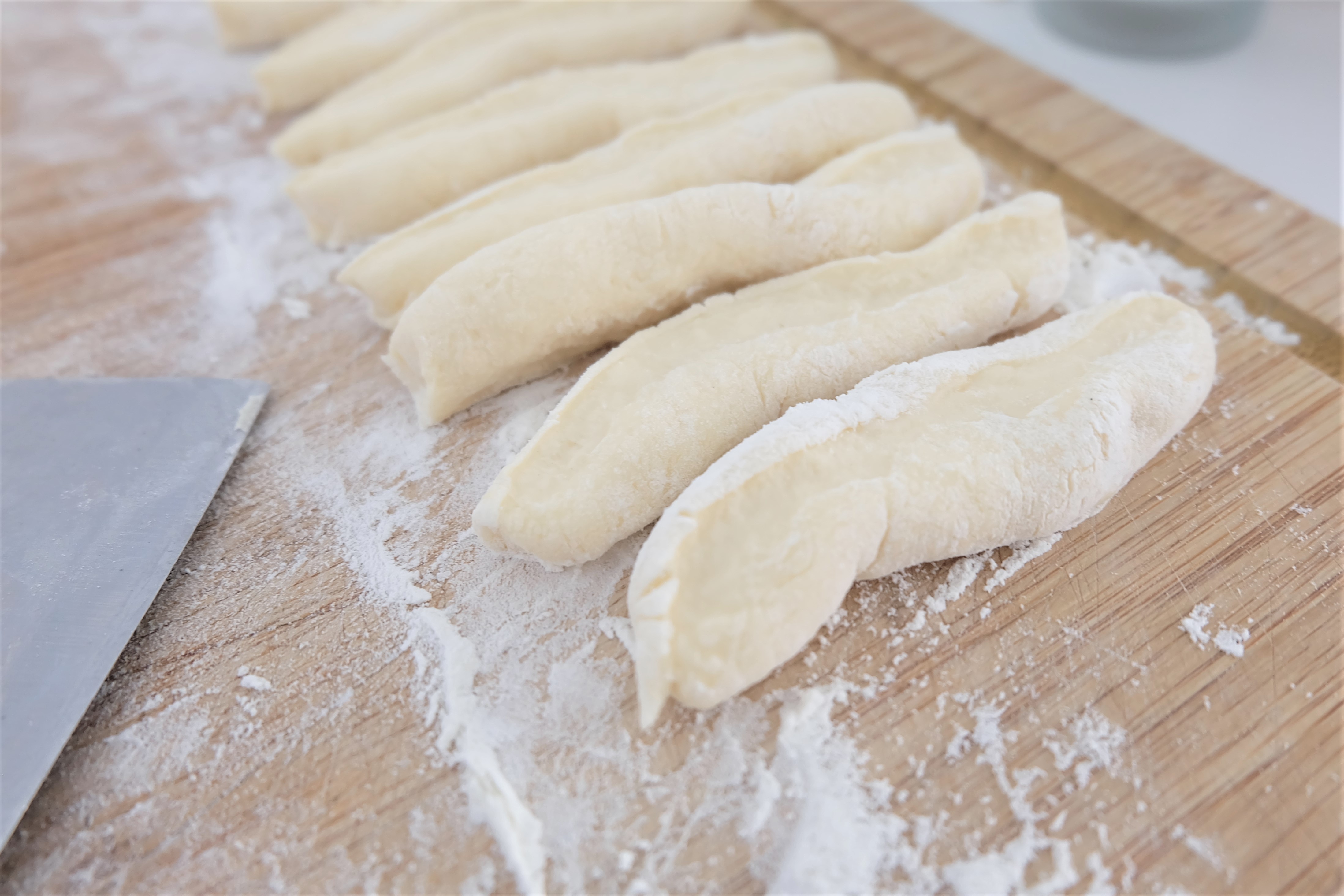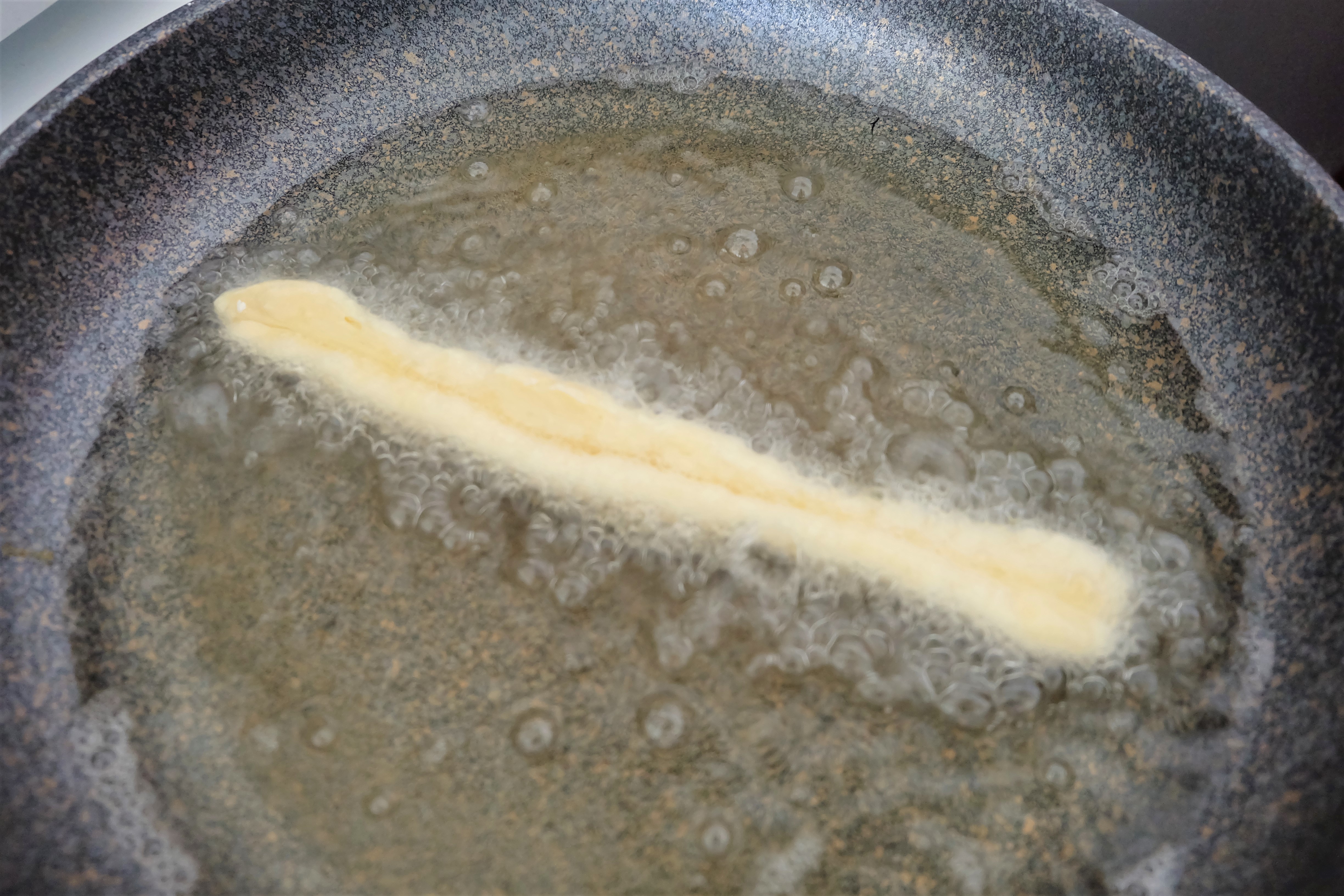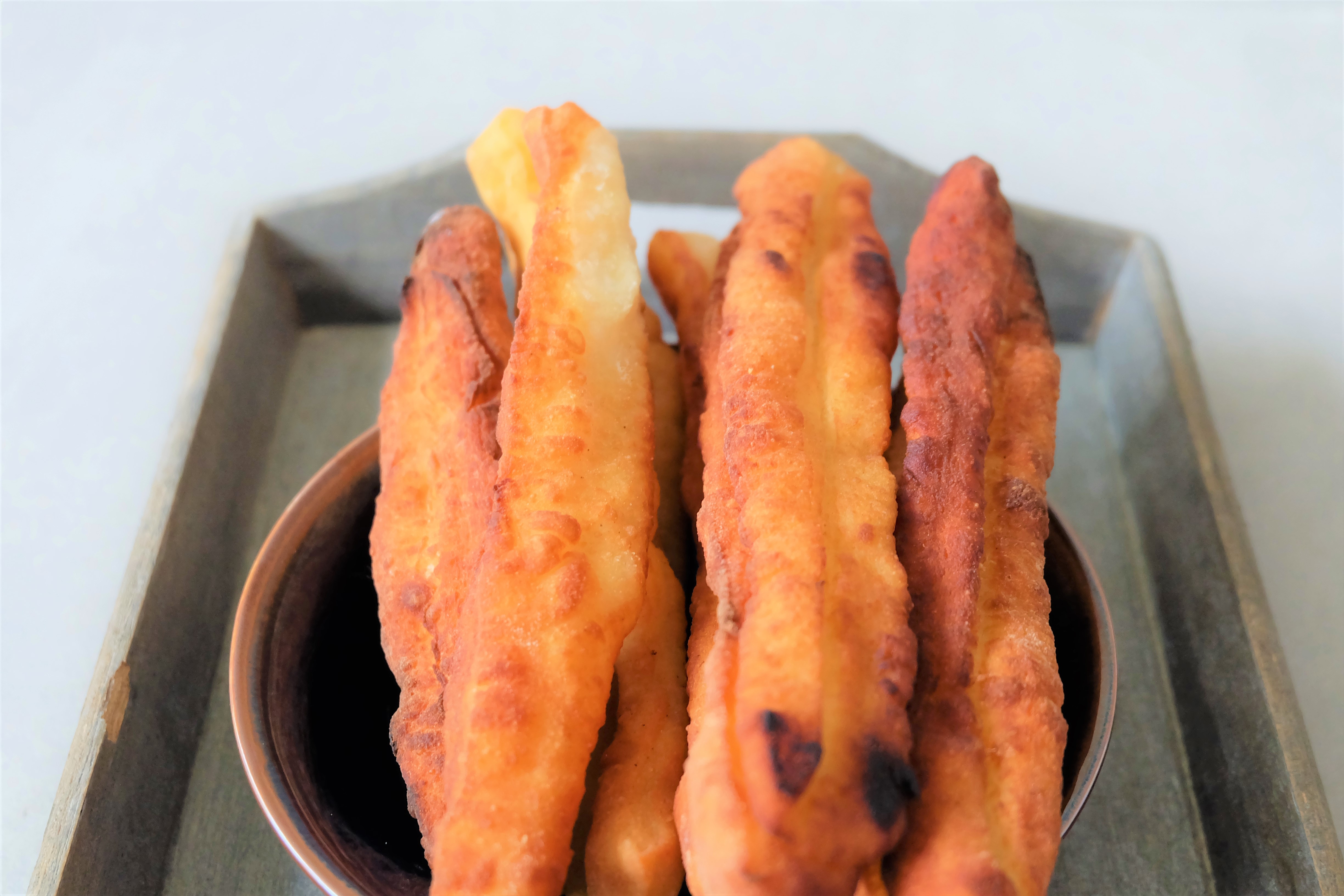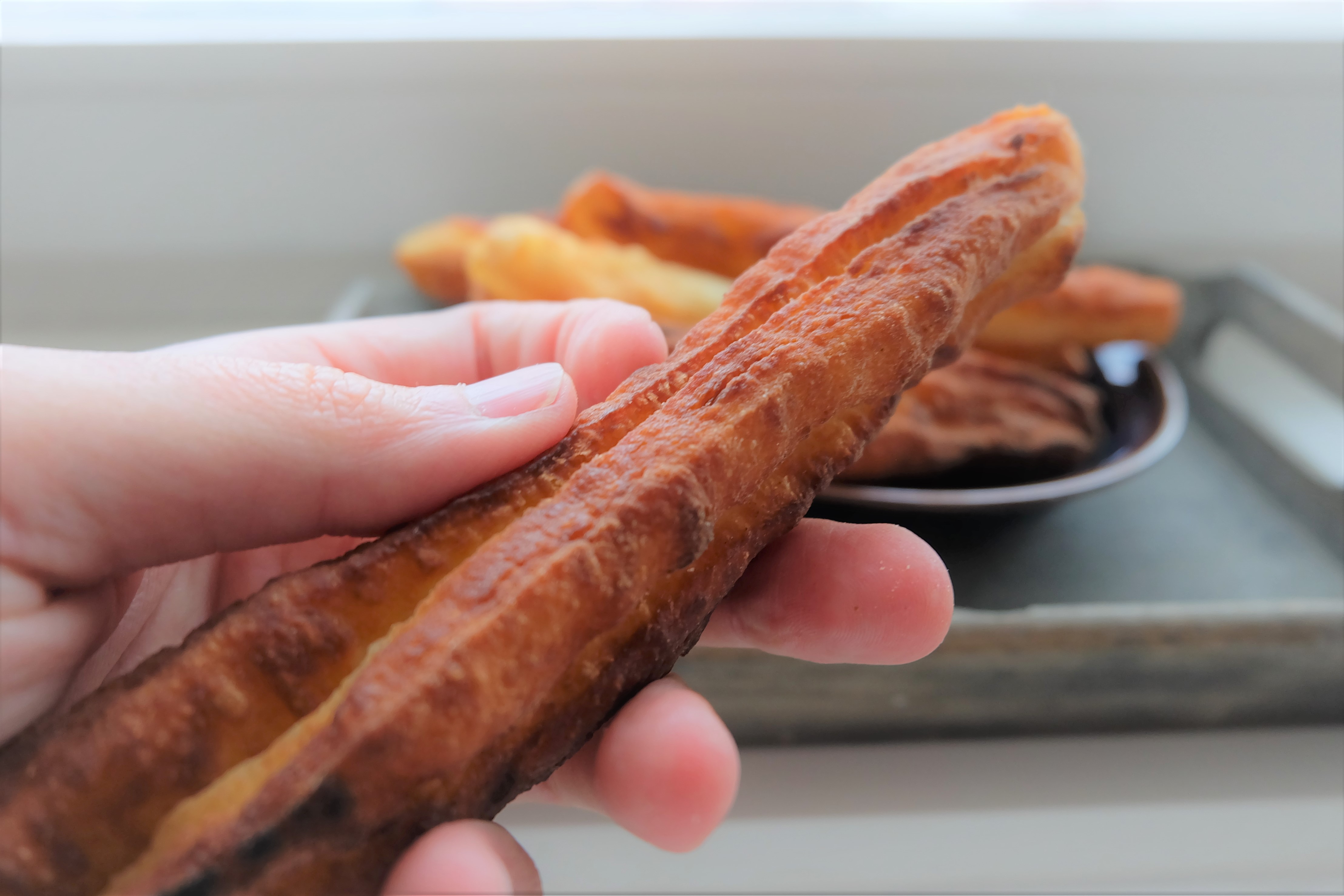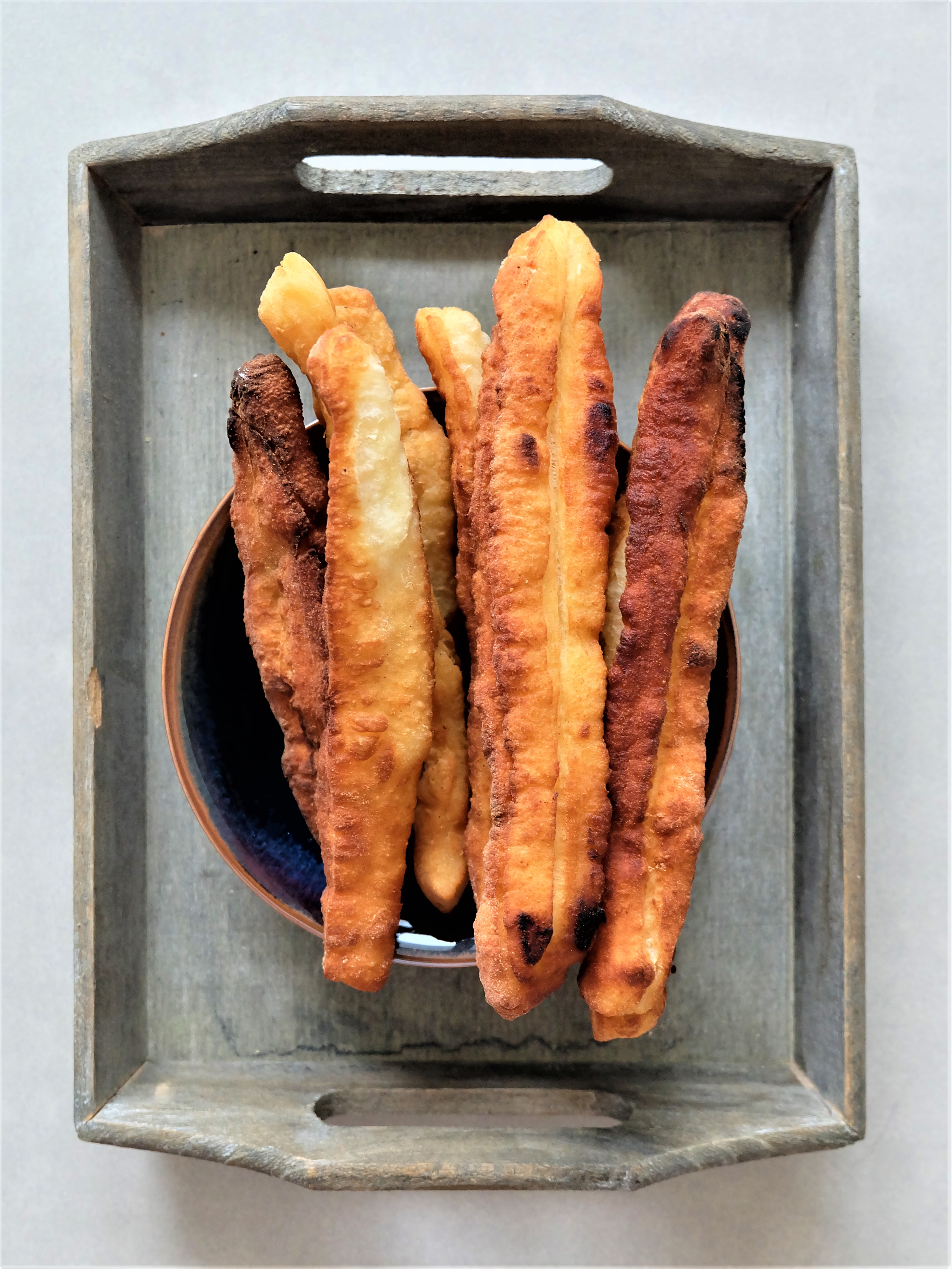
For most people in Southeastern China, from Shanghai to Taipei to Kowloon in Hongkong, Youtiao are a quintessential part of breakfast, together with doujiang (soya jelly) and douhuoshui (soya milk).
Known mostly by its Mandarin Chinese name Youtiao 油条/油條, Yutsagwey 油炸粿 makes most sense by its Hokkien name. But before we dive into the origins of this delicious southeastern Chinese snack, let us ponder over the macabre nature of its legend.
The Frying of the Villains
The year was 1142. General Yue Fei 岳飞/ 岳飛 was China’s national hero, who repeatedly defeated the invading Mongols. But his fame and righteousness drew the ire of the Premier, Qin Hui 秦桧. Instigated by his wife Wang 王氏, the Chinese Macbeth and Lady Macbeth plotted to kill Yue Fei. Eventually they succeeded in ripping him of his military control and the brutally murdering him in Hangzhou.
Through Qin Hui, land north of the River Huai 淮河 was ceded to Mongolia and every year China had to pay tribute, in exchange for peace. Both news shocked the whole of China.
In Hangzhou, near the area where General Yue Fei was murdered called Fengpoting 风波亭, a snack seller Wang Xiao-er 王小二 (a very common name, showing the legend was mostly likely fake) was incensed by the betrayal of Premier Qin Hui and his wife. He slapped two slabs of dough together back to back and fried them in oil. He then called his new invention Youzhahui ‘油炸桧’ – deep-fried Qin Hui (and his wife, presumably).
The deep-fried snack became extremely popular far and wide, because everyone wanted to devour the villain and his wife even though they were afraid to do so openly. It was probably compounded by the fact that Macbeth and Lady Macbeth was utterly delicious!
Why its name was originally Hokkien
Some claim the legend is true because Youzhahui 油炸桧 – deep-fried (Premier Qin) Hui – sounded close to the snack’s weird Cantonese name Yautsaguaï 油炸鬼 – deep-fried ghost. And ‘ghost’ in Chinese culture can also mean a living person in the form of a villain, or in recent times a white person.
But it could very well be that Yautsaguaï 油炸鬼 was a Cantonese mispronounciation of the Hokkien name Yutsagwey 油炸粿.
In Hokkien – the language of southern Fujian province – the word simply means ‘deep-fried dough’. Which is exactly what it is.
The other evidence is also the snack is predominantly eaten in southeastern China, reaching the rest of the country only in the past few centuries.
Etymologically speaking, it could very well be that Youtiao 油条/油條 or rather Yutsagueh 油炸粿 is originally a Hokkien (or ‘Minnan‘) food, eaten in Quanzhou, Xiamen and Taiwan.
—-
Ingredients
- 240g plain flour
- 1 egg
- 2 tsp salt
- 1 tbs baking powder
- 1 tbs milk
- 70ml water (to be added slowly batch by batch to the dough, such that it is soft but not sticky)
- 1l oil (for frying)
Servings: 2 persons
Instructions:
- Knead all your ingredients together for 15 minutes until it forms a soft yet non-sticky dough.
- Roll it into a rectangle of 10cm wide and 1cm thick.
- Wrap it tightly in a cellophane wrap and leave it in the fridge overnight.
- One hour before frying, take it out of the fridge to thaw completely back to room temperature.
- Cut into 3cm wide strips and stake 2 by 2, one strip above the other.
- Use a chopstick or the back of your knife to drive a vertical imprint down the middle of each stack.
- Gently pull each stack longer to about 20cm.
- Heat oil in wok, do not go above 140 degrees.
- Flash fry one youtiao at a time. Turn it round and round with a pair of chopsticks for it to get maximum exposure to the oil for it to grow. Once the youtiao bloats with air inside and floats, that means it is ready.
- Drip dry and serve!
*Tips:
- By leaving it overnight you’re making the dough very soft so that you can pull it longer without breaking before frying. Let the dough thaw for one hour before frying otherwise the interior will NOT cook while the outer crust gets too charred.
- Use (aluminium-free) double-acting baking powder (not single-acting) as you are not frying the dough immediately.
- DO NOT use low-gluten flour, use high or medium, otherwise the dough will not rise.
- You need to pull the dough so that a maximum amount of surface is reached for the youtiao to grow in size.
- Your homemade Youtiao will NEVER grow to the size of those sold commercially – 4 times the size. That is because the traditional method calls for Potassium Alum 明矾/明礬. This is a classified poison, although it had been used since the Song dynasty 960AD in China to make air bubbles in bread and cakes. In 2003, the World Health Organisation listed it as a poisonous item not suited for food consumption although Chinese vendors continue to use it.
